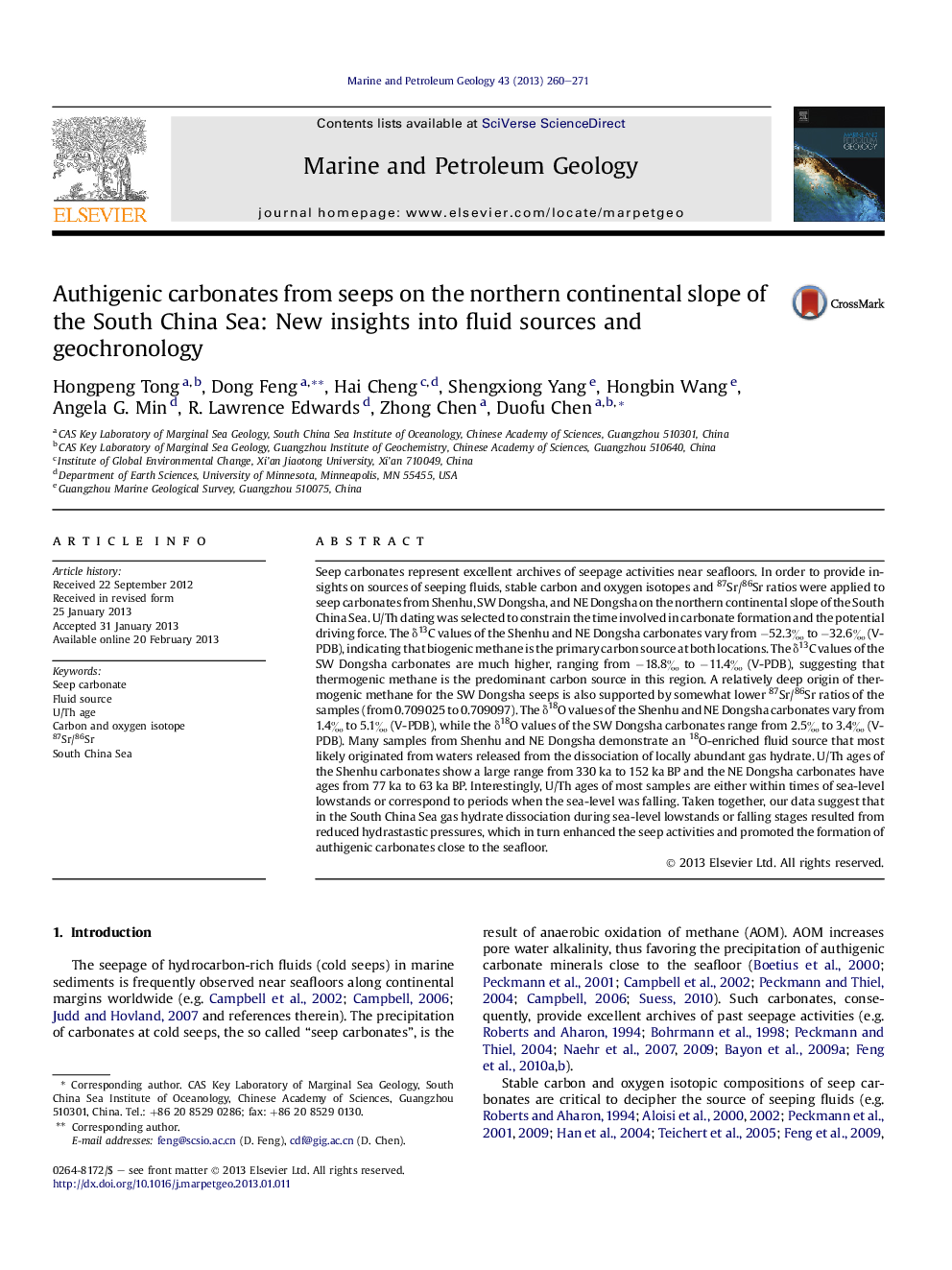| کد مقاله | کد نشریه | سال انتشار | مقاله انگلیسی | نسخه تمام متن |
|---|---|---|---|---|
| 6435535 | 1637181 | 2013 | 12 صفحه PDF | دانلود رایگان |

Seep carbonates represent excellent archives of seepage activities near seafloors. In order to provide insights on sources of seeping fluids, stable carbon and oxygen isotopes and 87Sr/86Sr ratios were applied to seep carbonates from Shenhu, SW Dongsha, and NE Dongsha on the northern continental slope of the South China Sea. U/Th dating was selected to constrain the time involved in carbonate formation and the potential driving force. The δ13C values of the Shenhu and NE Dongsha carbonates vary from â52.3â° to â32.6â° (V-PDB), indicating that biogenic methane is the primary carbon source at both locations. The δ13C values of the SW Dongsha carbonates are much higher, ranging from â18.8â° to â11.4â° (V-PDB), suggesting that thermogenic methane is the predominant carbon source in this region. A relatively deep origin of thermogenic methane for the SW Dongsha seeps is also supported by somewhat lower 87Sr/86Sr ratios of the samples (from 0.709025 to 0.709097). The δ18O values of the Shenhu and NE Dongsha carbonates vary from 1.4â° to 5.1â° (V-PDB), while the δ18O values of the SW Dongsha carbonates range from 2.5â° to 3.4â° (V-PDB). Many samples from Shenhu and NE Dongsha demonstrate an 18O-enriched fluid source that most likely originated from waters released from the dissociation of locally abundant gas hydrate. U/Th ages of the Shenhu carbonates show a large range from 330 ka to 152 ka BP and the NE Dongsha carbonates have ages from 77 ka to 63 ka BP. Interestingly, U/Th ages of most samples are either within times of sea-level lowstands or correspond to periods when the sea-level was falling. Taken together, our data suggest that in the South China Sea gas hydrate dissociation during sea-level lowstands or falling stages resulted from reduced hydrastastic pressures, which in turn enhanced the seep activities and promoted the formation of authigenic carbonates close to the seafloor.
⺠δ13C, δ18O, and 87Sr/86Sr were used to constrain fluid sources of the SCS seeps. ⺠Geochronology data for the SCS seep carbonates are firstly reported. ⺠U/Th dating reveals seeps developed during sea-level lowstands or falling stages. ⺠Hydrate dissociation owing to fallen sea levels may contribute to seeps in the SCS.
Journal: Marine and Petroleum Geology - Volume 43, May 2013, Pages 260-271